Did you know that you can reduce your carbon footprint just by making simple swaps in the foods you eat? Here are 13 of our favorite recipes for reducing your carbon footprint (and we’ll even tell you by how much), along with tips and ideas for how to make your kitchen and diet more sustainable!
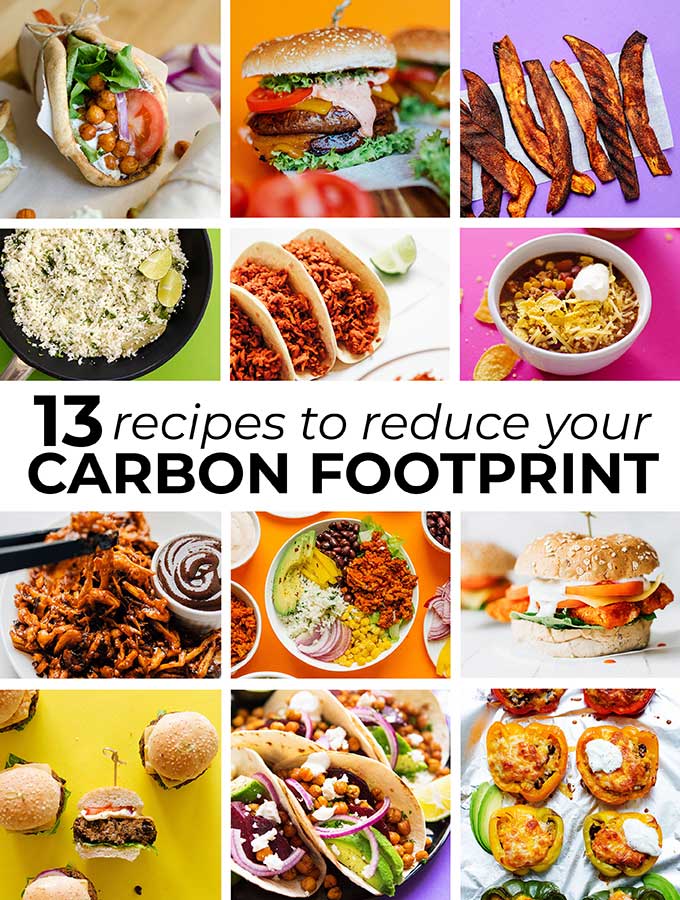
What is a carbon footprint?
A carbon footprint is a measurement of four greenhouse gasses: carbon dioxide, methane, nitrous oxide, and chlorofluorocarbons (CFCs). These are gasses which trap heat in the atmosphere, resulting in global warming.
The sum of these gasses is expressed in carbon dioxide equivalents in what we call the carbon footprint. The bulk of your personal carbon footprint likely comes from housing, travel, and food.
Where greenhouse gasses come from
When it comes to your food’s carbon footprint, there are a few major sources of greenhouse gas emissions:
Carbon dioxide (CO₂): This is the gas emitted most by humans. It’s released when we burn fossil fuels (such as in transportation of food).
Methane: While there are natural sources of methane emission, livestock also produce methane, accounting for 40% of emissions. Surprisingly, wetland rice production is also a large driver of methane emission, accounting for another 20%.
Nitrous oxide: Fertilizer, manure, and nitrogen-fixing crops production all contribute to this greenhouse gas. While conventional farming for our fruits and vegetables plays a part here, the feed for livestock (like corn and soy) play a large role.
Chlorofluorocarbons (CFCs): A gas emitted from mechanical refrigeration.

Which diet has the lowest carbon footprint?
Unsurprisingly, 18% of all greenhouse gas emissions come from livestock production. Why? Put simply, meat takes a lot of resources to produce!
There’s the food needed to feed the livestock (which must be fertilized, irrigated, processed, and transported), the methane output of livestock, transportation, and refrigeration.
And on top of all that, deforestation – primarily in South America – paves the way for more livestock.
Vegetarians on average have half the carbon footprint of meat eaters, and vegans have the lowest at 1.5 tons of CO₂ annually.
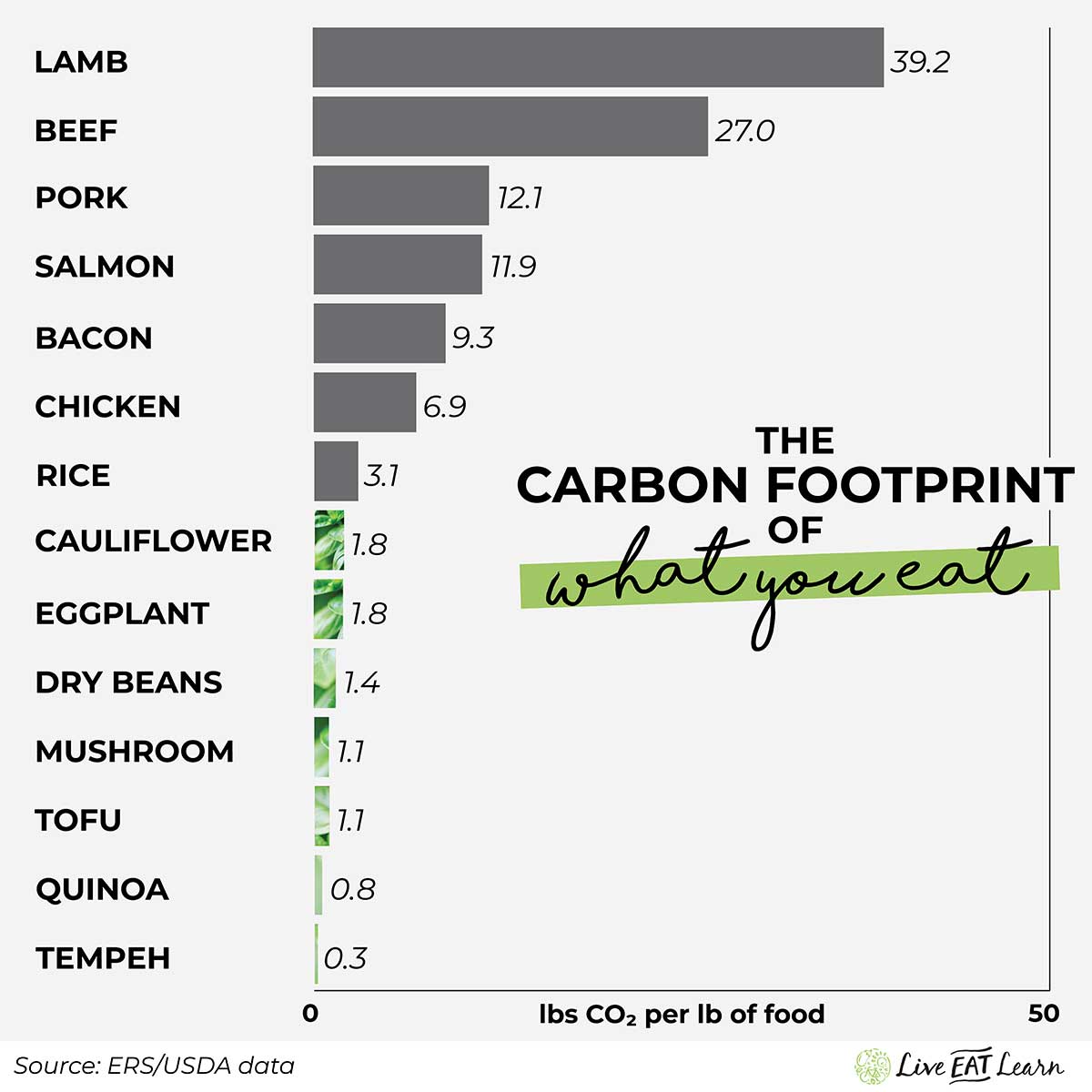
How to reduce your carbon footprint through food
You don’t need to do a complete diet overhaul to make major changes in your carbon footprint. With simple substitutions, you can contribute to a more sustainable world (without compromising on flavor)!
Here are 13 of my favorite vegetarian low carbon footprint recipes. You’ll find the total carbon savings for each recipe (compared to the meat alternative), along with a mileage equivalent to put in perspective the carbon footprint of a single meat serving relative to driving a car (each car icon indicates 1 mile in a 30 mpg car).
1. King Oyster Mushroom Pulled Pork
3 oz of mushrooms (0.21 lbs CO₂) replaces 6 oz of pulled pork (4.56 lbs CO₂). Saves 4.35 lbs CO₂ per serving

2. Roasted Chickpea Gyros
4 oz of chickpeas (0.32 lbs CO₂) replaces 4 oz of lamb (9.8 lbs CO₂). Saves 9.48 lbs CO₂ per serving

3. Vegan Burrito Bowls
2.6 oz of tempeh with 4 oz cauliflower rice (0.49 lbs CO₂) replaces 4 oz of beef with 4 oz rice (6.56 lbs CO₂). Savings of 6.07 lbs CO₂ per serving
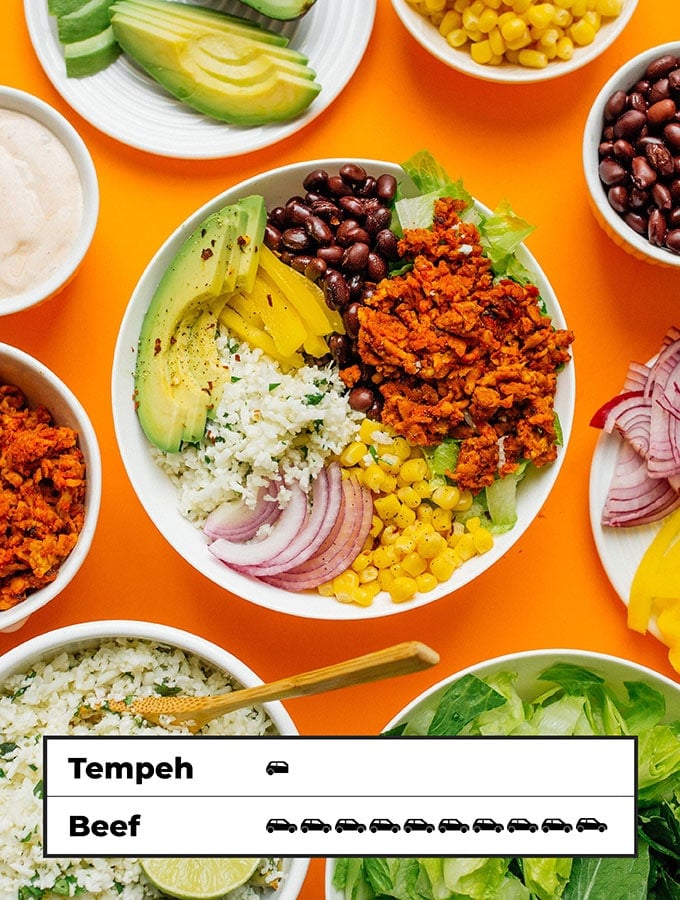
4. Taco Soup
2.3 oz of tofu (0.16 lbs CO₂) replaces 2.6 oz of ground beef (3.92 lbs CO₂). Savings of 3.76 lbs CO₂ per serving
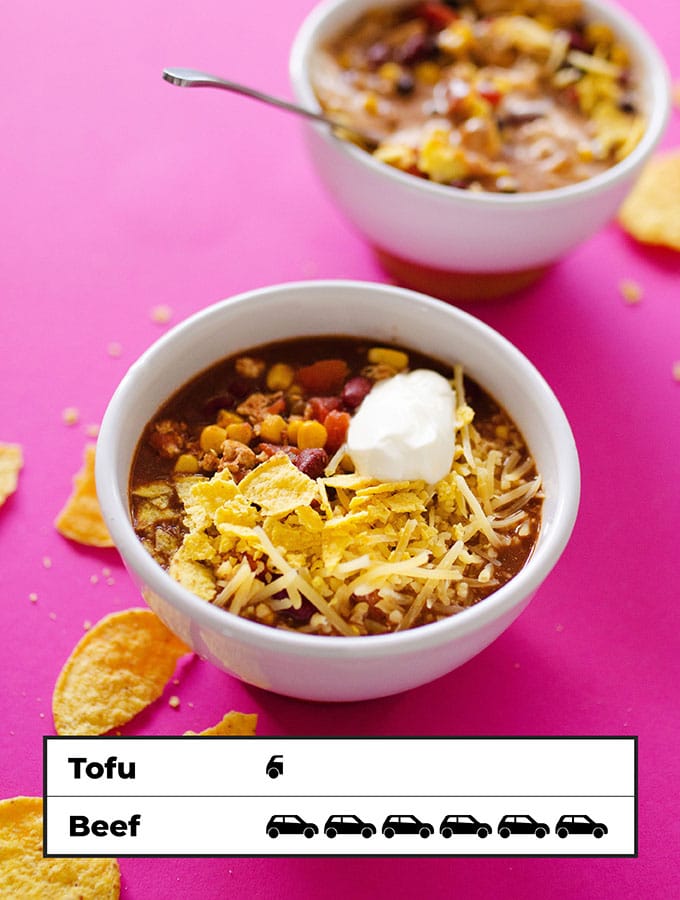
5. Roasted Beet and Chickpea Tacos
5 oz of chickpeas and 2/3 cup beets (0.84 lbs CO₂) replaces 4 oz of ground beef (5.84 lbs CO₂). Savings of 5 lbs CO₂ per serving
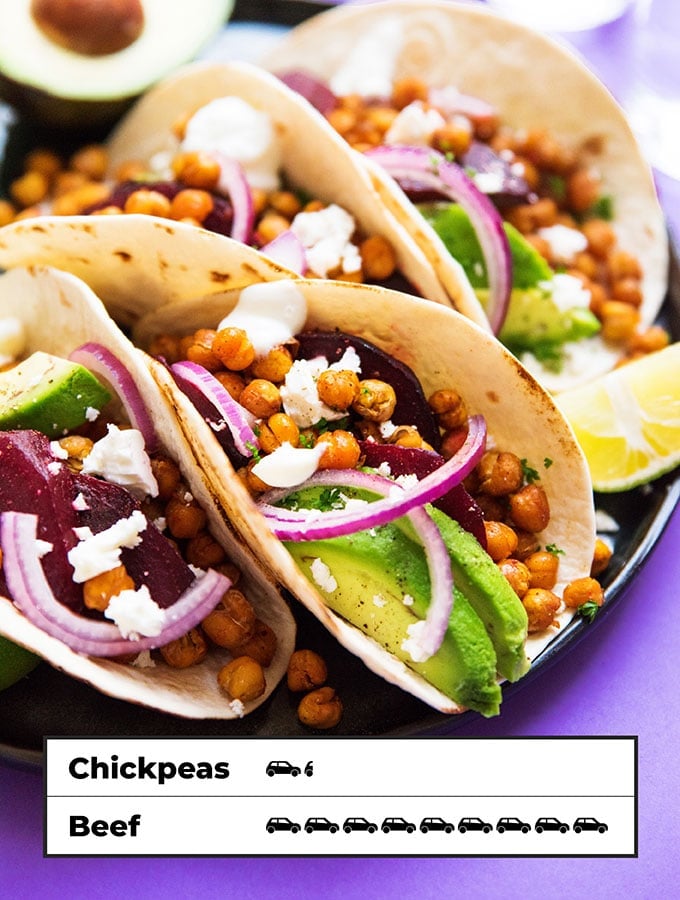
6. Chipotle Copycat Cauliflower Rice
6 oz of cauliflower (0.66 lbs CO₂) replaces 6 oz of rice (1.02 lbs CO₂). Savings of 0.36 lbs CO₂ per serving
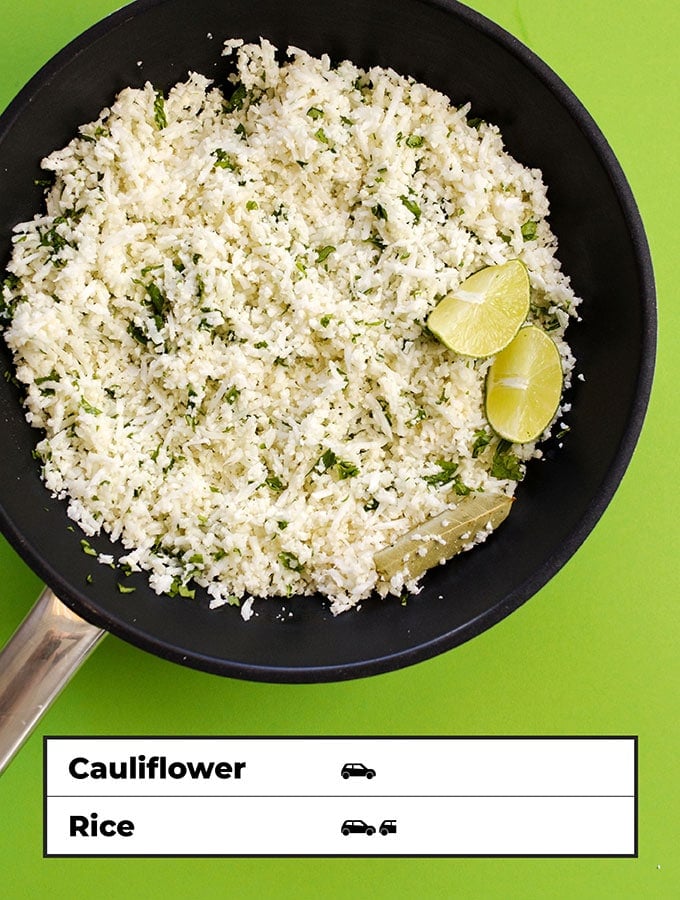
7. Portobello Mushroom Burgers
4 oz of mushroom (0.28 lbs CO₂) replaces 4 oz of ground beef (5.88 lbs CO₂). Savings of 5.6 lbs CO₂ per serving

8. Potato and Black Bean Burgers
2 oz of black beans with mashed potatoes (0.52 lbs CO₂) replaces 6 oz of ground beef (8.82 lbs CO₂). Savings of 8.3 lbs CO₂ per serving
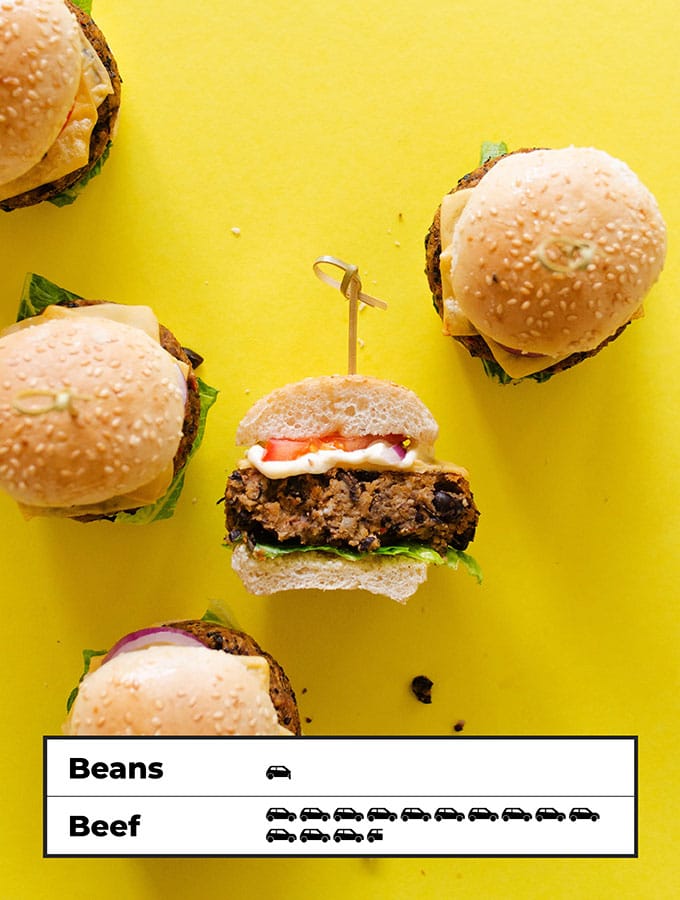
9. Enchilada Stuffed Peppers
4 oz of black beans (0.32 lbs CO₂) replaces 4 oz of ground beef (5.88 lbs CO₂). Savings of 5.6 lbs CO₂ per serving
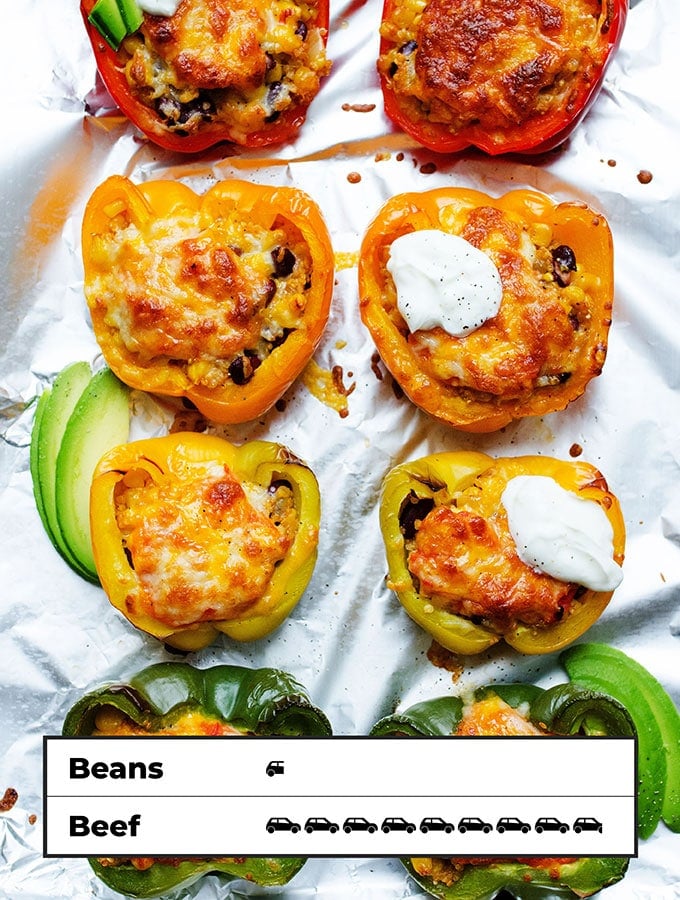
10. Eggplant Bacon
4 oz of eggplant (0.44 lbs CO₂) replaces 4 oz of bacon (2.32 lbs CO₂). Savings of 1.89 lbs CO₂ per serving
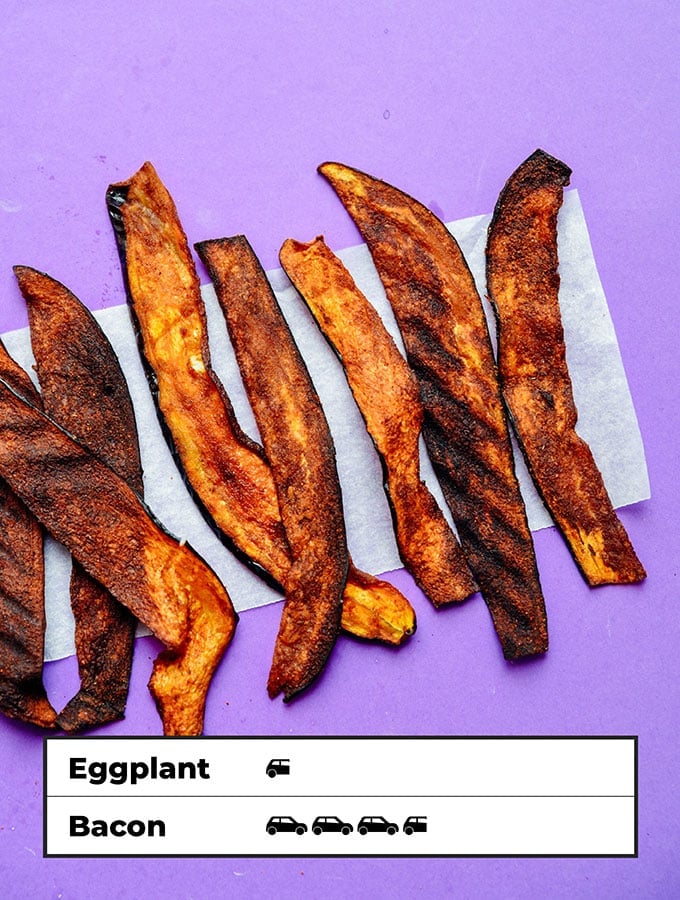
11. Buffalo Tempeh Sandwiches
2 oz of tempeh (0.04 lbs CO₂) replaces 3 oz of chicken (1.29 lbs CO₂). Savings of 1.25 lbs CO₂ per serving

12. Tempeh Taco Meat
4 oz of tempeh (0.08 lbs CO₂) replaces 4 oz of ground beef (5.88 lbs CO₂). Savings of 5.8 lbs CO₂ per serving
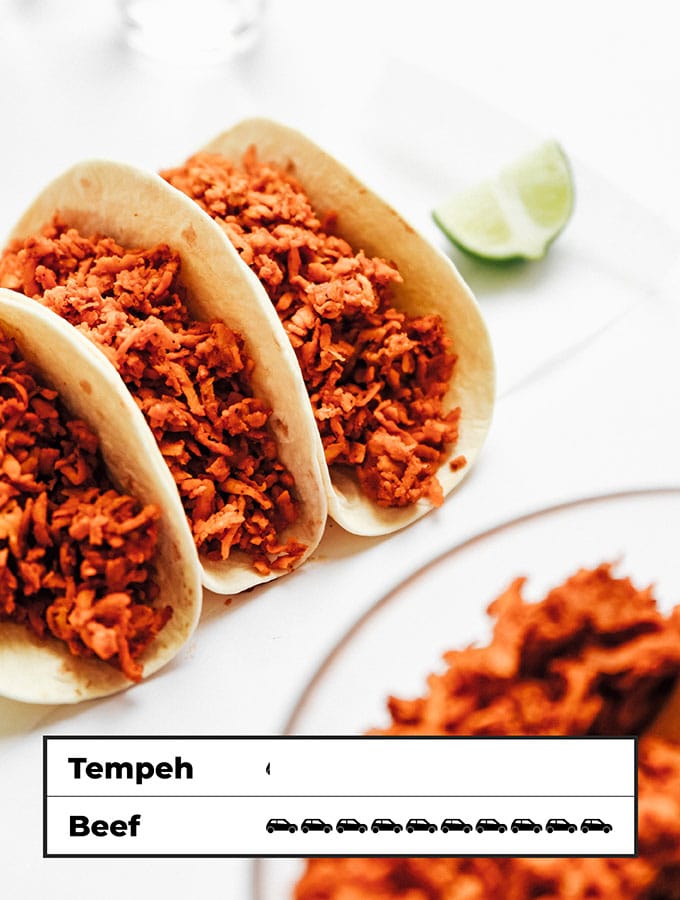
13. Tomato Tuna Sushi Bowl
3 oz of tomato (0.6 lbs CO₂) replaces 3 oz of tuna (1.14 lbs CO₂). Savings of 0.54 lbs CO₂ per serving

Cooking method matters
While the ingredients you use clearly play a huge role, your cooking method matters too.
Aim for lower energy emitting cooking methods to further reduce your carbon footprint. Air frying is a great alternative to the oven or deep fryer. An air fryer cooks 25% faster than the oven, while using only 1400 watts per hour. In contrast, the oven uses 2500 watts per hour. In total, you use 60% less electricity by using the air fryer.
3 steps to a lower carbon footprint through food
Phew, that’s a lot of information! And while you don’t need to memorize everything here, you’ll put a big dent in your carbon footprint if you just remember these 3 steps:
- Plant-based when possible: Plant-based diets are typically lowest in carbon emissions.
- Less cooking: Reduce your cook times to save energy, such as by using an air fryer.
- Eat local: Aim for local, seasonal produce, which doesn’t require as much transportation to get to your table.



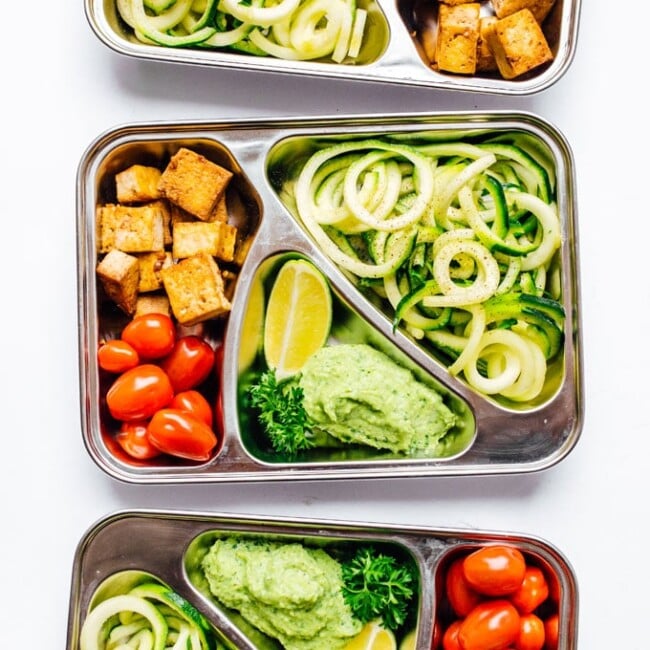

GW says
Wow. I have heard that beef is environmentally unfriendly, but have never seen any recipe that calculates the numbers. Another reason to make that taco soup.
Sarah says
Exactly! And I mean, it’s so much more tasty without the beef 😛